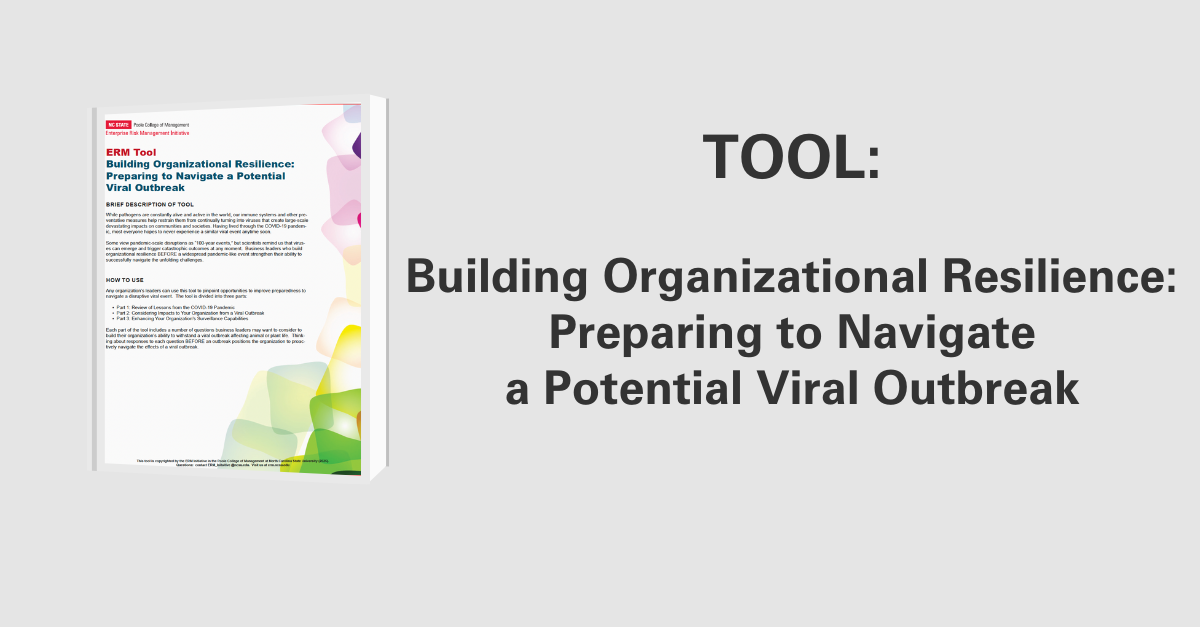A long-term view of risk is vital to navigate the near term.
Why prepare for the long-term?
- A long-term outlook helps companies face the future with confidence.
- Longer-term risk identification focuses organizations on where to invest.
- Understanding and managing toward the long view facilitates resilience and agility in pivoting at the speed of change.
Most significantly, complexity and volatility in the risk environment coupled with the velocity of change comprise a combustible mix when organizations fail to anticipate and adapt.
Carol Beaumier, senior managing director at global consulting firm Protiviti, reminds organizational leaders that, as you think about the economic headwinds that we’re facing in 2023, don’t forget to ask, “What steps are my organization undertaking or continuing over the near term to ensure that they’re sufficiently agile and resilient to thrive in this decade of disruption?
Watch Beaumier discuss long-term risks in this short video.
What are the top risks on the horizon?
In our annual Executive Perspectives on Top Risks study, the 10-year outlook sustains the ongoing narrative that the 2020s is indeed a decade of disruption.
Risks on the horizon for 2032 indicate an overarching intersection of:
- disruptive innovation,
- advancing technologies, and
- talent challenges.
Executives indicate concerns about emerging innovations and their organization’s ability to attract, afford and retain the skills needed to embrace inevitable change—particularly changes to technology infrastructures to compete with “born digital” organizations and to leverage advanced data analytics to garner market insights needed to be competitive.
The Top 5 risks identified for 2032 are:
- Organization’s succession challenges and ability to attract and retain top talent in a tightening talent market may limit ability to achieve operational targets
- Adoption of digital technologies may require new skills in short supply, requiring significant efforts to reskill/upskill employees
- Rapid speed of disruptive innovations enabled by new and emerging technologies and/or other market forces may outpace ability to compete
- Resistance to change may restrict the organization from making necessary adjustments to the business model and core operations
- Ensuring privacy and compliance with growing identity protection expectations may require significant resources
The table below reveals the overall percentage of respondents who scored each of the top 5 long-term risks as “Significant Impact” risks (6.0 or higher), as well as the percentage of respondents who rate each as a 5.0 (Medium) or as 4.0 or below (Low) for 2032. This suggests that these top risks have the potential to noticeably impact most organizations.
More information can be found in the Executive Perspectives on Top Risks for 2023 and 2032 Report.



